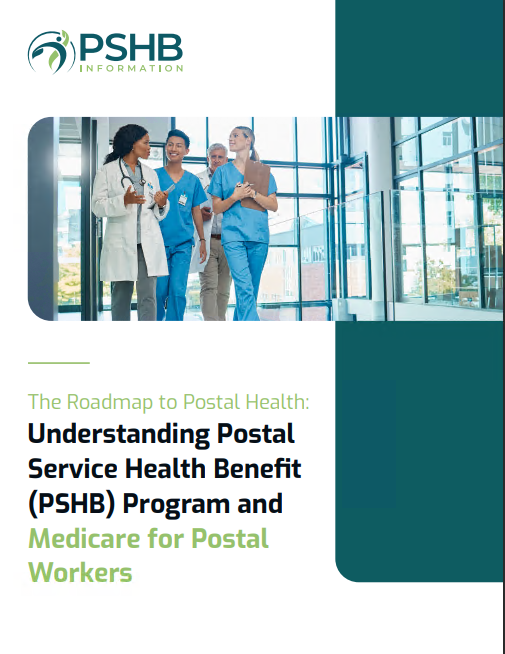Key Takeaways
-
Medicare Part B plays a crucial role in your Postal Service Health Benefits (PSHB) coverage, offering essential medical services that can save you money in the long run.
-
Understanding enrollment rules, costs, and coordination with PSHB plans ensures you maximize your benefits without unnecessary expenses.
Understanding Medicare Part B for PSHB Members
As a Postal Service Health Benefits (PSHB) enrollee, Medicare Part B may be a key piece of your healthcare puzzle, especially once you reach eligibility. But what does it really cover? How does it work alongside your PSHB plan? And most importantly, is it worth the cost? Let’s break it all down in a way that makes sense for you.
What Medicare Part B Covers
Medicare Part B is all about outpatient care. It picks up costs for medically necessary services like doctor visits, preventive screenings, outpatient procedures, and durable medical equipment. But that’s just the basics—here’s a more detailed look:
Doctor Visits & Preventive Care
-
Annual wellness visits
-
Flu shots and other vaccinations
-
Cancer screenings (such as mammograms and colonoscopies)
-
Diabetes screenings and management programs
Outpatient Services
-
Emergency room visits (if not leading to inpatient admission)
-
Physical therapy, occupational therapy, and speech-language pathology services
-
Lab tests and imaging (X-rays, MRIs, and blood work)
-
Mental health services, including therapy and psychiatric evaluations
Durable Medical Equipment (DME)
-
Wheelchairs, walkers, and hospital beds
-
Oxygen supplies for home use
-
Blood sugar monitors and insulin pumps for diabetics
Medications Administered by a Doctor
-
Chemotherapy drugs
-
Some injectable medications
-
Certain immunosuppressive drugs (if you had an organ transplant)
How Medicare Part B and PSHB Work Together
Your PSHB plan remains your primary coverage if you’re still actively working. But once you retire and become eligible for Medicare, Part B can work alongside your PSHB plan to reduce out-of-pocket costs. Here’s how:
Coordination of Benefits
-
If you have both PSHB and Medicare Part B, Medicare pays first for covered outpatient services, and your PSHB plan may cover the remaining costs.
-
Many PSHB plans waive deductibles and copays if you’re enrolled in Medicare Part B, saving you money.
-
Medicare Part B can help reduce unexpected medical expenses, especially for frequent doctor visits or chronic conditions requiring ongoing treatment.
When to Enroll in Medicare Part B
Timing matters when signing up for Medicare Part B. If you miss your initial enrollment window, you might face late penalties. Here’s what you need to know:
Initial Enrollment Period (IEP)
-
Starts three months before your 65th birthday, includes your birthday month, and lasts three months after.
-
Enrolling during this window avoids late penalties and ensures coverage starts as soon as you need it.
Special Enrollment Period (SEP)
-
If you’re still working and covered under PSHB, you can delay Part B without penalties.
-
Once you retire, you have an eight-month window to enroll in Part B without facing late fees.
General Enrollment Period (GEP)
-
Runs from January 1 to March 31 each year.
-
If you miss your IEP or SEP, you’ll have to wait for this period and may pay higher monthly premiums for life.
What Medicare Part B Costs
Medicare Part B isn’t free—you’ll pay a monthly premium, plus potential deductibles and coinsurance. In 2025, the standard monthly premium is $185, but it could be higher if your income exceeds certain thresholds.
Other Costs to Consider
-
Annual deductible: $257 in 2025. You’ll need to meet this amount before Medicare starts covering costs.
-
Coinsurance: After meeting the deductible, you generally pay 20% of Medicare-approved costs for covered services.
Should You Get Medicare Part B if You Have PSHB?
It depends on your situation. Here are some factors to consider:
Reasons to Enroll
-
Lower Out-of-Pocket Costs: Many PSHB plans waive deductibles and copays if you have Medicare Part B.
-
More Provider Options: Medicare gives access to doctors and specialists nationwide, reducing network restrictions.
-
Predictable Costs: With both Medicare and PSHB, your healthcare expenses are often more manageable.
Reasons to Delay
-
If You’re Still Working: Active employees can delay Part B without penalty since their PSHB plan covers them.
-
If You Rarely Use Medical Services: If you’re healthy and don’t visit doctors often, you might not see immediate savings from Part B.
How to Enroll in Medicare Part B
Signing up is simple:
-
Visit SSA.gov to enroll online.
-
Call 1-800-772-1213 to apply over the phone.
-
Visit a local Social Security office in person.
Making the Most of Medicare Part B
If you enroll in Part B, here are some tips to maximize your benefits:
-
Use preventive services to catch health issues early.
-
Choose in-network providers who accept Medicare and coordinate with PSHB.
-
Understand your Explanation of Benefits (EOB) to track what’s covered.
What Happens If You Miss Your Enrollment Window?
Delaying Part B when you’re supposed to enroll can be costly:
-
You’ll pay a penalty of 10% for every 12-month period you went without Part B coverage.
-
The penalty lasts for life, increasing your premium permanently.
-
You’ll have to wait until the General Enrollment Period (January 1 – March 31) to enroll, with coverage starting in July.
How to Get Personalized Assistance
If you’re unsure about enrolling in Medicare Part B, a licensed agent listed on this website can help you explore your options. Speaking with an agent ensures you understand the best approach for your healthcare needs.








